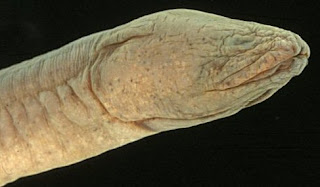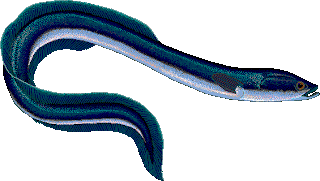Da buzz of today and the day before is a long-tailed almost-monkey hitting the book shelves, TV screens, all other media, and the scientific press in one sweep. If it costs USD 1 million on the fossil market, there are consequences.

Ida, also known as Darwinius masillae, a 47 million year old fossil of a
primate mammal. From Franzen et al. (2009), slightly modified.
So, where to go with taxonomy? Play show, or play low? Whereas on the one hand it is fascinating that taxonomy can be so pervasive and so hypeable, and should nourish hopes of more appreciation for this discipline which underlies all biology but also is a science on its own; the other hand is raised in warning that we can’t do science only in the headlines.
Although the article in question, about a 47 million year old primate fossil from Germany, is very nicely done, and has a fascinating history to tell, the most telling indication that things are not coming out as intended is the complete misunderstanding expressed in all headlines, “missing link between monkey and Man”. For what I understand it is more something that went extinct between lemurs and monkeys. But I see Sir David hugging a lemur in promoting the research on …. aw, yes, that’s where we are. The crucial piece in taxonomy. The scientific name. The index. The one item that is needed to find back the information about this species.
PlosOne, the publisher of the study of dear almost-monkey is an e-only journal, where authors pay to publish, but it is free to read online. There is no paper edition. For a scientific name to be available it has to be in a publication printed on paper, with simultaneously available more than one identical copies (or on other more or less durable media provided some special conditions, but web publication is not permitted). The International Code of Zoological Nomenclature is quite clear on this in its Article 8. The Code is there to keep track of the names of more than 1.5 million animal species on Earth, and thus a very important instrument in Zoology.
There is no evidence yet that this paper publication exists, and thus the intended name of the fossil, Darwinius masillae, as it appears in the online article, is reproduced here only to attract search engines to this blog.
This is somewhat embarrassing, but also sign of the times, times when roads cross at different levels and communication has glitches in changing traditions. We are going digital. Not only our toys and tools are binary and glowing like Swatch watches, but our minds have drifted away with the circuits. I was fascinated by the digital displays and remote controls on the vacuum cleaners when looking for replacement for the one that died; seems, however, the analogue version eventually purchased sucks dust with sufficient energy without displays.
I have no intention of not being absorbed by the digital tsunami. I will survive surfing. It will take some adjustments, however. E-only publishing of taxonomic matter is still counter to stability. But we have to find ways for e-only to come forth. Not to promote hype, but so we can get more papers published and more papers (read: information) more widely accessible, than is possible by paper publication. My office, my home office, are both like libraries. And still every day there is some paper-only publication that I need and cannot get. But I am immensely grateful for AnimalBase and the Biodiversity Heritage Library, and of course the Internet Archive and Google Books, for frequently saving my day.
I want all of the fishes I publish on to be on TV, and in the newspapers. I want TV personalities to enthusiastically comment on the fishes I study. But first of all, I would like to see this information society come together a little bit better, with open access, GUIDs, e-only publishing, the Global Names Architecture (GNI) and more from the informatics side, and names, descriptions, diagnoses, images, data and interpretations from the taxonomists’s side. In that context, we shall not forget to make the names nomenclaturally available.
Blog links
Ed Young
Brian Switek
Carl Zimmer
Article link
Franzen JL, Gingerich PD, Habersetzer J, Hurum JH, von Koenigswald W, et al. 2009 Complete Primate Skeleton from the Middle Eocene of Messel in Germany: Morphology and Paleobiology. PLoS ONE 4(5): e5723. doi:10.1371/journal.pone.0005723






